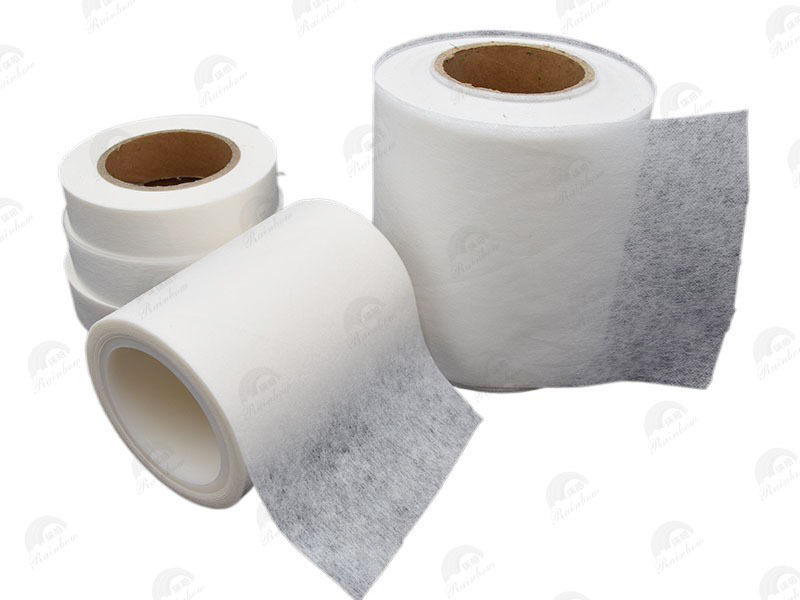Understanding GRS Certified Nonwoven Interlining: A Sustainable Choice for the Textile Industry
Release time:
2025-06-06
In the ever-evolving textile industry, the demand for sustainable materials is on the rise, prompting many manufacturers to seek out environmentally responsible options. GRS Certified Nonwoven Interlining has emerged as a prominent choice for those looking to balance quality with sustainability. The Global Recycle Standard (GRS) certification ensures that products meet strict environmental and social criteria, making it an essential component in the production of interlining fabrics.
Nonwoven interlining serves a crucial role in garment construction. It provides stability, support, and shape retention to fabrics, enhancing the overall quality of the finished product. GRS Certified Nonwoven Interlining is particularly valued for its ability to combine these functional benefits with an eco-friendly profile. By utilizing recycled materials, manufacturers can significantly reduce their carbon footprint while still delivering high-quality interlining options.
The certification process for GRS involves rigorous assessments of the material's environmental impact, chemical usage, and social responsibility practices. This means that when you choose GRS Certified Nonwoven Interlining, you are not only investing in a superior product but also supporting a supply chain that prioritizes sustainability. This commitment to environmental stewardship is increasingly important to consumers, who are more conscious than ever about the sources of the products they purchase.
In addition to its sustainability credentials, GRS Certified Nonwoven Interlining offers versatility in application. It can be used in a variety of garments, from shirts and jackets to uniforms and activewear. Its lightweight yet strong composition allows it to provide the necessary structure without adding bulk, making it suitable for a wide range of fashion styles.
Furthermore, the use of GRS Certified Nonwoven Interlining can help brands enhance their marketability. As sustainability becomes a key differentiator in the competitive textile landscape, showcasing the use of GRS-certified materials can resonate with eco-conscious consumers. This not only aids in building brand loyalty but also aligns with global efforts to promote sustainable fashion.
In conclusion, GRS Certified Nonwoven Interlining stands out as a smart choice for textile professionals aiming to integrate sustainability into their product offerings. By choosing this eco-friendly interlining option, manufacturers can ensure they are contributing to a more sustainable future while maintaining the quality and functionality expected in today’s textiles. As the industry continues to evolve, embracing certified materials will be crucial in meeting both consumer expectations and regulatory standards.
Nonwoven interlining serves a crucial role in garment construction. It provides stability, support, and shape retention to fabrics, enhancing the overall quality of the finished product. GRS Certified Nonwoven Interlining is particularly valued for its ability to combine these functional benefits with an eco-friendly profile. By utilizing recycled materials, manufacturers can significantly reduce their carbon footprint while still delivering high-quality interlining options.
The certification process for GRS involves rigorous assessments of the material's environmental impact, chemical usage, and social responsibility practices. This means that when you choose GRS Certified Nonwoven Interlining, you are not only investing in a superior product but also supporting a supply chain that prioritizes sustainability. This commitment to environmental stewardship is increasingly important to consumers, who are more conscious than ever about the sources of the products they purchase.
In addition to its sustainability credentials, GRS Certified Nonwoven Interlining offers versatility in application. It can be used in a variety of garments, from shirts and jackets to uniforms and activewear. Its lightweight yet strong composition allows it to provide the necessary structure without adding bulk, making it suitable for a wide range of fashion styles.
Furthermore, the use of GRS Certified Nonwoven Interlining can help brands enhance their marketability. As sustainability becomes a key differentiator in the competitive textile landscape, showcasing the use of GRS-certified materials can resonate with eco-conscious consumers. This not only aids in building brand loyalty but also aligns with global efforts to promote sustainable fashion.
In conclusion, GRS Certified Nonwoven Interlining stands out as a smart choice for textile professionals aiming to integrate sustainability into their product offerings. By choosing this eco-friendly interlining option, manufacturers can ensure they are contributing to a more sustainable future while maintaining the quality and functionality expected in today’s textiles. As the industry continues to evolve, embracing certified materials will be crucial in meeting both consumer expectations and regulatory standards.
GRS Certified Nonwoven Interlining
Previous Page
Previous Page
Latest News
Nantong Rainbow Technology Co., Ltd.
Telephone:+86-13587673537
E-mail:chrislc717@163.com
Address: Group 42, Xizansi Village, Xiting Town, Tongzhou District, Nantong City, Jiangsu Province

Copyright©2024 Nantong Rainbow Technology Co., Ltd. | Powered by www.300.cn
Copyright©2024 Nantong Rainbow Technology Co., Ltd.
Powered by www.300.cn




